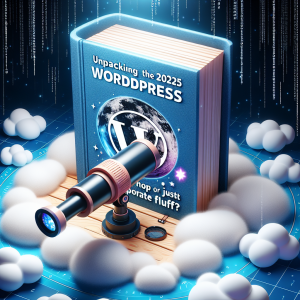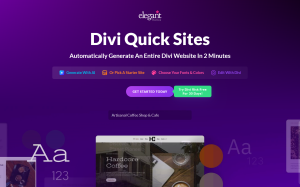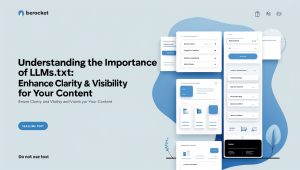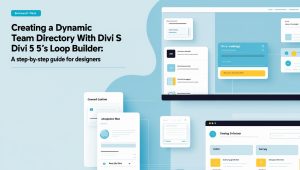Unlocking the Secrets to Optimizing Content for AI Search Visibility
I know we’re living in a landscape dominated by Artificial Intelligence—not the dystopian kind you often see in sci-fi films but a more practical iteration that sifts through our digital detritus in search of relevance. Microsoft, in an effort to shed some light on this brave new world, recently unveiled some sage advice for those wishing to elevate their content for AI search visibility. So, buckle up, as we delve deep into the murky waters of optimization, and by the end, you’ll be prepared to make your content shine like a lighthouse amidst a storm of competition! 🚀
The Structure of Success
When faced with the colossal task of crafting content that not only informs but also ranks, I often find myself pondering: What makes a piece of writing not just good, but *great* in the context of AI competitions? According to the experts, the structure is paramount. A well-organized format helps AI systems (and human readers) easily navigate your content. A solid introduction followed by clearly defined headings allows both the electronic crawlers and our fellow readers to make sense of what you’re presenting.
Think of your content as a GPS: just like it guides you from Point A to Point B, your structured content navigates through a complex array of information to deliver clarity. I’ve learned that headings and subheadings are not just decoration—they’re essential road signs that help both humans and algorithms find their way through the forest of your ideas.
Mastering the Art of Formatting
Formatting goes beyond just using bold and italics; it’s about creating an inviting visual landscape. Lists, bullet points, and short paragraphs can break up the monotony of text-heavy sections, thus enhancing readability. When you present information in digestible chunks, you’re doing yourself a favor. You’re not just catering to human readers. Nope, we’re talking about AI that thrives on clarity and simplicity. The clearer your content, the better it stands a chance of being appreciated by AI algorithms.
I realize that some may roll their eyes at this point and say, “But I want my content to be aesthetically pleasing!” Trust me, I get it. A well-written article can be a work of art. But in the increasingly AI-driven universe, we have to balance aesthetics with functionality. At times, it feels like walking a tightrope—too much flair and you might fall off; too little, and you risk boring your audience into a coma.
Schema Markup: The Hidden Weapon
Now let’s talk about schema markup, the underdog of content optimization. It might sound like jargon worthy of a tech manual, but in reality, it’s the secret sauce that can significantly boost your search visibility. Think of schema markup as an extra layer of metadata that gives AI engines context about your content. I’m a firm believer that adding a bit of schema makes your digital presence sharper, like putting on glasses to see the world in HD.
This hidden weapon not only lets search engines gather data more effectively, but it can also enrich the visibility of your snippets in search results. Imagine your content isn’t just a head in the crowd but the one wearing a funky hat! So, sprinkle some schema markup throughout your work, and watch your click-through rates rise like fresh bread in the oven. 🍞
Avoiding Common Pitfalls
I’ve been around long enough to know that with every optimization technique comes a myriad of common mistakes that can sabotage even the best efforts. One prevalent issue is keyword stuffing—a tactic that reeks of desperation. Instead of lacing your content with keywords like a teenager slathers on cologne, aim for a more natural incorporation. AI has become increasingly sophisticated; it can smell inauthenticity from a mile away.
Another blunder involves ignoring the mobile experience. In the world we inhabit today, where people swipe and scroll more than they read, neglecting to ensure your website is mobile-friendly is akin to building a beautiful storefront on a street no one visits. It’s vital to acknowledge that many users access content via their phones, and if your site isn’t optimized for them, you’re shooting yourself in the foot.
Final Thoughts
In conclusion, optimizing content for AI search visibility isn’t merely an exercise in technicality; it’s an art form that requires a deft touch. From structuring content strategically to mastering the nuances of schema markup, every detail plays a significant role in the larger picture. I’ve internalized that it’s not just about climbing the search engine ranks; it’s about crafting engaging, informative, and approachable content that resonates with both AI and human readers. 🧠
So, when you embark on your next writing adventure, remember these tips. Your content can become a beacon of light in an often-chaotic digital sea, leading readers—both human and algorithmic—directly to your shores. With a dash of creativity and a sprinkle of optimization know-how, your content is bound to become a star in a universe bustling with wannabe supernovas. 🌟









